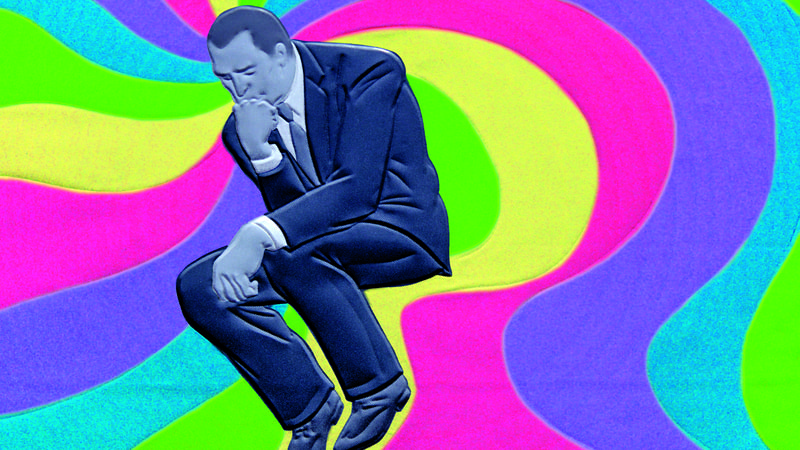
Evidence is mounting that LSD, properly used, could have vast potential for reducing depression, stimulating brain growth and enhancing creativity.
Micro-dosers aren’t waiting for an official stamp of approval. And thanks to renegade psychologists like Dr. James Fadiman, they don’t have to. Fadiman’s 2011 book, “The Psychedelic Explorer’s Guide,” offers LSD users practical guidelines on how to use the drug “safely.” It’s considered the micro-doser’s Bible, and Fadiman himself has much the stature Leary once had.
Fadiman’s even invented a micro-dosing “protocol,” which consists of roughly 10% of the amount of LSD consumed in a typical “acid trip” — in other words, about 10-15 micrograms. Heavy users might take these small amounts of LSD twice a week – or every three days, Fadiman suggests.
Where do micro-dosers get their LSD? They buy it online through the “dark web,” the underground cyber-realm that most social media users avoid like the plague but IT specialists familiar with the intricacies of the Internet can access in their sleep.
In recent months, support for micro-dosing has spread like wildfire across the web. Currently, some 22,000 avowed micro-dosers are operating on the social media site Reddit, sharing their far-flung experiments and experiences with LSD, usually anonymously. Hundreds more are communicating through their blogs and agreeing to go on the record publicly in interviews with journalists.
At a three-day conference held in Oakland, California in April, Fadiman asked members of the audience how many were currently experimenting with LSD. More than 400 hands shot up. Pockets of support for micro-dosing are popping up in the UK and Australia.
With the support of a PhD graduate, Fadiman’s begun collecting testimonies from LSD micro-dosers. Survey volunteers fill out a detailed questionnaire and return it to his research team via his web site. Fadiman says it’s noteworthy how many fixate on micro-dosing’s effect on their work life.
“You’re doing a task you normally couldn’t stand for two hours, but now you do it for three or four,” he told Vibe magazine earlier this year. “Just a good day. That seems to be what we’re discovering.”
There are glitches, of course. Occasionally, some people end up taking a little too much LSD and start “tripping,” causing a scandal at their job. Maybe they’re sent home on medical leave, but they return the next day. So far, there are few reports of employees actually being fired for LSD use.
Despite the mounting scientific evidence, the taboo surrounding LSD remains strong. And any new push to legalize LSD, even for research purposes, is likely to hit a brick wall at the Trump White House. Attorney general Jeff Sessions is already plotting ways to beat back the marijuana legalization movement. LSD, with its heavier stigma, probably doesn’t stand a chance.
But as the marijuana debate has shown, public perceptions do change, often radically, in the space of just a few years. And IT workers in Silicon Valley, while decidedly liberal on the whole, aren’t hippies; they’re as mainstream status-quo as they come.
Who knows, in a country as work-obsessed as the United States, emphasizing LSD’s contribution to creativity on the job — and its relative safety compared to destructive workplace stimulants like speed, Adderall or worse, crystal meth — could be just the catalyst the country needs to stimulate a long-overdue reconsideration.

Leave a Reply